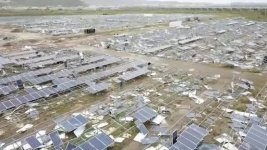bilby
Fair dinkum thinkum
- Joined
- Mar 6, 2007
- Messages
- 33,983
- Gender
- He/Him
- Basic Beliefs
- Strong Atheist
https://www.forbes.com/sites/michaelshellenberger/2018/04/23/if-solar-and-wind-are-so-cheap-why-are-they-making-electricity-more-expensive/
And the disposal of wasted oversupply.
As intermittent renewables become a significant fraction of the energy generation mix, the cost of electricity soars.
The solution, of course (assuming we wish to eliminate fossil fuels from the mix, which we surely do) is nuclear power.
Part of the problem is that many reporters don’t understand electricity. They think of electricity as a commodity when it is, in fact, a service — like eating at a restaurant.
The price we pay for the luxury of eating out isn’t just the cost of the ingredients most of which which, like solar panels and wind turbines, have declined for decades.
Rather, the price of services like eating out and electricity reflect the cost not only of a few ingredients but also their preparation and delivery.
And the disposal of wasted oversupply.
As intermittent renewables become a significant fraction of the energy generation mix, the cost of electricity soars.
The solution, of course (assuming we wish to eliminate fossil fuels from the mix, which we surely do) is nuclear power.

